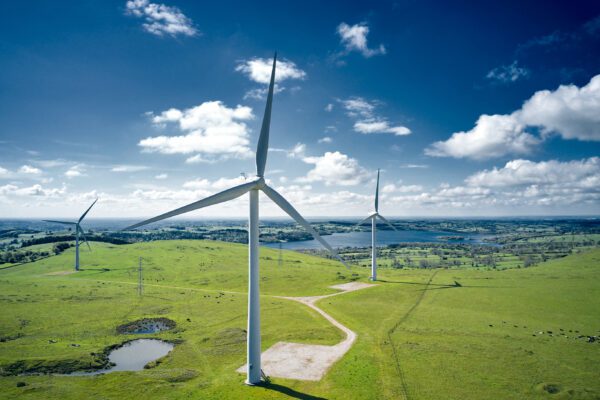
Finding flexibility in your energy strategy
When we talk about flexibility in relation to energy, we often think about areas like demand-side response and flexible procurement. But as our energy system evolves, and new products and services emerge, businesses are finding flexibility in new areas of their energy strategies. Here are just a few of the new opportunities for businesses to […]
When we talk about flexibility in relation to energy, we often think about areas like demand-side response and flexible procurement. But as our energy system evolves, and new products and services emerge, businesses are finding flexibility in new areas of their energy strategies.
Here are just a few of the new opportunities for businesses to be flexible in the way that they…
Buy energy
When it comes to procurement, many businesses have already realised the benefits of a flexible buying strategy. So for those that are striving to embrace flexibility in their energy procurement, a Corporate Power Purchase Agreement (CPPA) may not be their first consideration – but perhaps it should be.
With many businesses striving to improve their sustainability credentials as we move towards Net-Zero, organisations with a CPPA in place can prove that they’re buying from a specific, low-carbon source (and in many cases, that the source wouldn’t exist without the CPPA). In the past, the fairly rigid nature of CPPAs may have deterred organisations from exploring them further, as they were typically entered into for a minimum of 10-15 years. But the good news is, CPPAs are changing, and it’s becoming easier for businesses that want greater flexibility to get involved.
Many CPPAs are portable so businesses don’t have to remain within the same supply contract – if they want to leave their supply contract when it ends, they can, and the CPPA remains intact. The previous supplier can simply sleeve the volume through to the new supplier. Many businesses are also now able to take a proportion of the offtake from the generator, whereas previously they would take the majority of the offtake. It is the increased flexibility from the generator/developer side that is driving this change. Developers are building larger installations, due to benefits of economies of scale and no access to subsidies. This means that CPPAs are becoming more accessible to a wider range of businesses that need flexibility.
Fund on-site generation projects
For many businesses, the business case for generating energy on-site is clear-cut – on-site generation can help organisations to reduce their reliance on expensive grid energy, boost their resilience and reduce their carbon emissions. But many projects fall at one particular key requirement- funding.
That’s because the upfront cost of self-funding the installation of assets such as solar panels, biomass boilers and wind turbines can be very high, so many businesses are prevented from accessing the benefits of on-site generation simply because they do not have this capital available. But self-funding is just one of the funding options available for on-site generation projects – for those who are open to a Behind the Meter PPA, projects that were previously out of reach could become viable.
Behind the Meter PPAs are long-term agreements – the typical length of such a PPA ranges from 10-25 years. For projects that are fully-funded by a Behind the Meter PPA, the funder pays all the installation, ongoing operation and maintenance costs and the business the project is installed within pays a pre-agreed price in exchange for the energy they use from the asset. However, many businesses are opting for a combination of self-funding and a PPA, which has the advantage of reducing the PPA price and the duration of the PPA term. This is a good option that should be considered. With a range of funding options available and different levels of flexibility associated with each of them, businesses should no longer feel that they cannot access on-site generation because they cannot provide all of the funding for a project themselves.
Access new revenue streams
At Inspired Energy’s recent On Demand Week, National Grid ESO shared their plans for how the flexibility market is going to continue to change, as ESO is currently striving to improve its products and services to make them more open, transparent and fit for the future.
They are looking to move reserve markets to day-ahead procurement, in line with European balancing guidelines. ESO hopes to eventually move all markets to day-ahead procurement, because they believe it will allow them to better access intermittent generation and demand-side flexibility assets that may not be able to confirm their availability for long periods of time. It’s currently very difficult for owners of intermittent generation such as solar or wind panels, for example, to participate in month-ahead markets because they don’t know what the weather will be like that far in advance, so moving all markets to day-ahead could remove that barrier for these businesses.
ESO also revealed that they are exploring ways to deliver new, faster frequency response products to manage the lower inertia in the system. Many DNOs and other third parties are also striving to introduce new local markets for flexibility products, to allow businesses to sell their flexibility to DNOs or ESO. Therefore, there could be plenty of new opportunities for those who can be flexible in the future.
Embrace flexibility with Inspired Energy
At Inspired Energy, we’re here to guide businesses through our transition to a low-carbon energy system, and flexibility certainly has a big role to play in our energy future.
So whether you’re looking to explore whether a CPPA is right for your organisation, find funding for an on-site generation project or access new revenue streams for flexible assets, our experts can provide you with best-in-class advice. Give us a call today on 01772 689 250.










